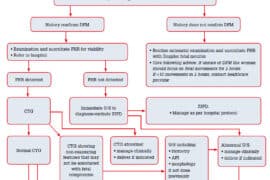Easy and Healthy Lean Protein Recipes for Your Little Ones
Happy day, awesome parents! It’s time to bring the healthy and delightful world of lean protein recipes to your kids’ plates. Efficient development and growth are things we all want for our little ones, and lean protein plays an essential role in achieving this. So, roll your sleeves up, give a warm welcome to your inner gourmet chef, and let’s dive into these scrumptious and nutritious recipes.
Why Opt for Lean Protein?
Before we start tossing ingredients in the pan, let’s talk briefly about why lean proteins should be a fundamental part of your children’s diet.
The Powerhouse of Nutrients
Lean proteins are crammed with the essential amino acids that boost your child’s growth and development. They’re also a fantastic source of vitamins and minerals like iron, which fuels the production of healthy red blood cells, and Vitamin B, which supports neurodevelopment and promotes overall well-being.
Keeps Hunger at Bay
High-protein foods keep your children feeling fuller for longer, keeping those “I’m hungry” cries at bay between meals. They also help maintain stable blood sugar levels, preventing those energy crashes after sugar-laden snacks.
Cooking Up Yummy Lean Protein Recipes
Now that we’ve covered the why, it’s time to move on to the fun part – the cooking! Transforming these nutrition-packed foods into delicious meals that your children will love is easier than you might think. Below, you’ll find a few simple, yet tantalizing and lean protein recipes you should try.
Please stay tuned for tasty recipes coming your way!

1. Grilled Chicken Skewers
What can be more fun than food on a stick? That’s right, nothing! Marinate juicy chicken breast pieces in a mixture of olive oil, lemon juice, garlic, and your favorite herbs overnight. Slide them onto skewers, grill until nicely browned, and voila! A quick, lean protein-packed feast is ready.
2. Lentil Soup
Rich in protein and dietary fiber, lentils make a warm, filling meal that’s perfect for those colder days. Begin by sautéing some onions, garlic, and carrots, then add in your lentils, vegetable broth, and let it simmer until everything is well-cooked and flavors meld together. This wholesome, comforting, and delicious soup is going to win your little ones’ hearts!
3. Quinoa Salad
Quinoa, a protein-rich grain, is the star of this salad. Mix cooked quinoa with colorful veggies like bell peppers, corn, and cherry tomatoes. Don’t forget the crunchy sunflower seeds for that extra bite! Dress it up with some olive oil, lemon juice, and a sprinkle of sea salt, and your rainbow of nutrients is ready for munching.
4. Peanut Butter Banana Smoothie
Smoothies can also make a great lean protein snack. Blend bananas, a spoonful of natural peanut butter, a scoop of your favorite protein powder and milk of your choice. This yummy and quick treat will feel like dessert while providing an excellent protein source!
Making Lean Proteins Fun
But remember, like any other food, the secret is in making lean proteins fun for your kiddos. Be creative with the presentation, use playful dinnerware, and involve them in the cooking process when appropriate. The more enjoyable and engaging the experience, the more likely your children would be excited about including lean proteins in their diets.
There you have it, beloved parents! A handy, happy guide to feeding your children lean proteins in a fun and nutritious way. With these recipes, you’ll not only be taking a pivotal step towards healthy growth for your children but also ushering them into a world of tasty discoveries. Now, isn’t that a parenting win? Trust the process, enjoy the journey, and keep adding that dash of love in every recipe!
Happy Cooking!
Preparing for Lean Protein Recipes: 5 Essential Tips for Parents
Incorporating lean protein into your family’s meals is a healthy and fulfilling way to keep everyone energized. Here are 5 crucial facts parents should remember when preparing lean protein recipes.
1. Understand What Constitutes Lean Protein
Not all proteins are created equal. Lean protein sources are low in fat, high in protein, and beneficial for overall health. Such sources include white meat poultry, lean red meat, fish, eggs, tofu and legumes.
2. Master the Art of Cooking Lean Protein
Retaining the nutritious value of lean proteins during cooking requires certain methods. Grilling, broiling, roasting, steaming or boiling are the healthiest ways to prepare these proteins, as these methods minimize the need for added fats.
3. Creativity is Key in Preparing Variable, Interesting Meals
Ensure that your family doesn’t get bored of eating healthy by varying your recipes. You can find numerous lean protein recipes online or in cookbooks specifically aimed at healthy, family-friendly meals. Mix up your meal plan to keep things fresh and interesting.
4. Balance the Meal with Complex Carbs and Vegetables
Lean protein should be part of a balanced dish. Include complex carbohydrates like whole grains, as they provide long-lasting energy, and colorful vegetables which offer essential vitamins and minerals.
5. Educate Your Family about the Importance of Lean Protein
Take this opportunity to teach your children about nutritious eating choices. Explain the role of lean proteins in muscle building, maintaining a healthy weight and keeping our bodies functioning efficiently.
In concluding, adding lean protein to family meals doesn’t have to be a challenge. With these tips, preparation can be simplified and enjoyable for everyone involved.
For more great articles please see here. For more information see here
Disclaimer
The articles available via our website provide general information only and we strongly urge readers to exercise caution and conduct their own thorough research and fact-checking. The information presented should not be taken as absolute truth, and, to the maximum extent permitted by law, we will not be held liable for any inaccuracies or errors in the content. It is essential for individuals to independently verify and validate the information before making any decisions or taking any actions based on the articles.




